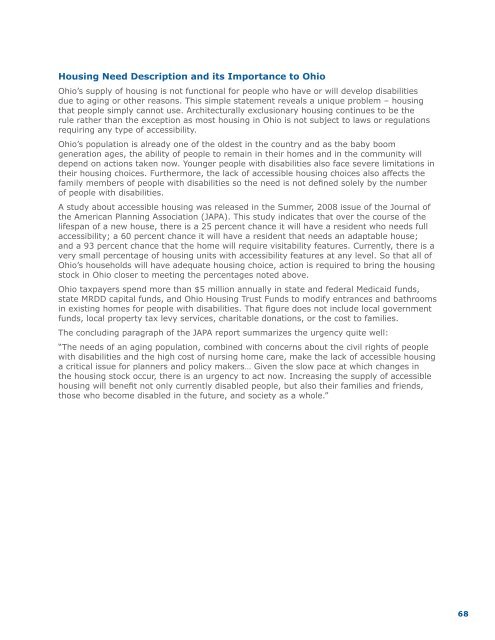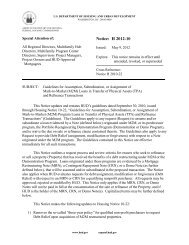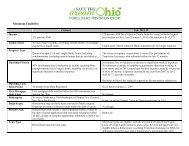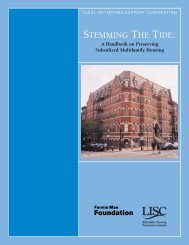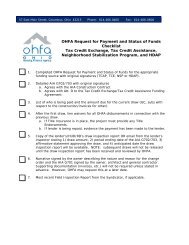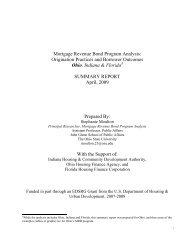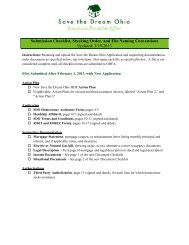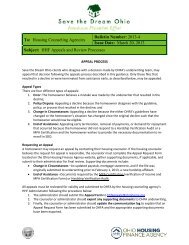OHFA Annual Plan - Ohio Housing Finance Agency
OHFA Annual Plan - Ohio Housing Finance Agency
OHFA Annual Plan - Ohio Housing Finance Agency
Create successful ePaper yourself
Turn your PDF publications into a flip-book with our unique Google optimized e-Paper software.
<strong>Housing</strong> Need Description and its Importance to <strong>Ohio</strong><strong>Ohio</strong>’s supply of housing is not functional for people who have or will develop disabilitiesdue to aging or other reasons. This simple statement reveals a unique problem – housingthat people simply cannot use. Architecturally exclusionary housing continues to be therule rather than the exception as most housing in <strong>Ohio</strong> is not subject to laws or regulationsrequiring any type of accessibility.<strong>Ohio</strong>’s population is already one of the oldest in the country and as the baby boomgeneration ages, the ability of people to remain in their homes and in the community willdepend on actions taken now. Younger people with disabilities also face severe limitations intheir housing choices. Furthermore, the lack of accessible housing choices also affects thefamily members of people with disabilities so the need is not defined solely by the numberof people with disabilities.A study about accessible housing was released in the Summer, 2008 issue of the Journal ofthe American <strong>Plan</strong>ning Association (JAPA). This study indicates that over the course of thelifespan of a new house, there is a 25 percent chance it will have a resident who needs fullaccessibility; a 60 percent chance it will have a resident that needs an adaptable house;and a 93 percent chance that the home will require visitability features. Currently, there is avery small percentage of housing units with accessibility features at any level. So that all of<strong>Ohio</strong>’s households will have adequate housing choice, action is required to bring the housingstock in <strong>Ohio</strong> closer to meeting the percentages noted above.<strong>Ohio</strong> taxpayers spend more than $5 million annually in state and federal Medicaid funds,state MRDD capital funds, and <strong>Ohio</strong> <strong>Housing</strong> Trust Funds to modify entrances and bathroomsin existing homes for people with disabilities. That figure does not include local governmentfunds, local property tax levy services, charitable donations, or the cost to families.The concluding paragraph of the JAPA report summarizes the urgency quite well:“The needs of an aging population, combined with concerns about the civil rights of peoplewith disabilities and the high cost of nursing home care, make the lack of accessible housinga critical issue for planners and policy makers… Given the slow pace at which changes inthe housing stock occur, there is an urgency to act now. Increasing the supply of accessiblehousing will benefit not only currently disabled people, but also their families and friends,those who become disabled in the future, and society as a whole.”68


